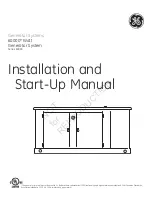
6
9
LFO MIDI SYNC (default: off)
Range
off [of] and 1 to 96)
- allows the LFO waveform to be synchronised to MIDI clock, with a variable divide ratio. The LFO
waveform will automatically adjust its length so that it fits almost exactly between MIDI clocks, and
last for what ever musical time it is set for (see below for divide ratios).
A divide ratio can be set so the LFO only retriggers every so many MIDI clock messages.
If set to 1, there will be 1 cycle of the LFO for every 1 MIDI clock. (i.e. 24 cycles per quarter note). If
set to 24, there will be 1 cycle of the LFO for every 24 MIDI clocks. (i.e. 1 cycle of the LFO per quarter
note)
Note: MIDI sends 24 clocks per quarter note.
Below is a table of values you can set the divide ratio to to obtain LFO cycles of various musical
lengths:
Note
type;
Divide
ratio;
Semibreve
96
Minim
48
Crotchets
24
Crotchet
triplets 16
Quavers
12
Quaver
triplets
8
Semiquavers
6
Semiquaver triplets
4
Demisemiquavers
3
Demisemiquaver triplets
2 Note - MIDI sends 24 clocks per quarter note
a
Juno/Jupiter Mode (default: Juno)
- Set this to receive optimum performance from your PRO-DCB depending on which synth you use.
However if this is set-up incorrectly it will not cause any problems.
b
Clock Divide Ratio (default: 2)
Range
1 to 24
- displays the ratio of MIDI clocks to output pulses from the arp clock jack socket.
If set to " 2" there will be 1 pulse from the arp clock jack socket for every 2 MIDI clocks. (i.e. 12 pulses
per quarter note). If set to "24" there will be 1 pulse from the arp clock jack socket for every 24 MIDI
clocks. (i.e. 1 pulse per quarter note).
N.B. MIDI sends 24 clocks per quarter note.
C
Positive / Negative edge clock pulse (default: Positive)
- sets whether the clock pulse train starts with a positive going edge or a negative going edge.
Most synths / sequencers & drum machines will want the Positive edge pulse, (inc. Junos and
Jupiters) but a few require the Negative edge instead. (e.g. Korg Monopoly).
D
Continue = start - (values on, off, default = off)
when set to off, MIDI continue messages are ignored. If set to on, then continue messages are
treated as if they were MIDI start messages.





























